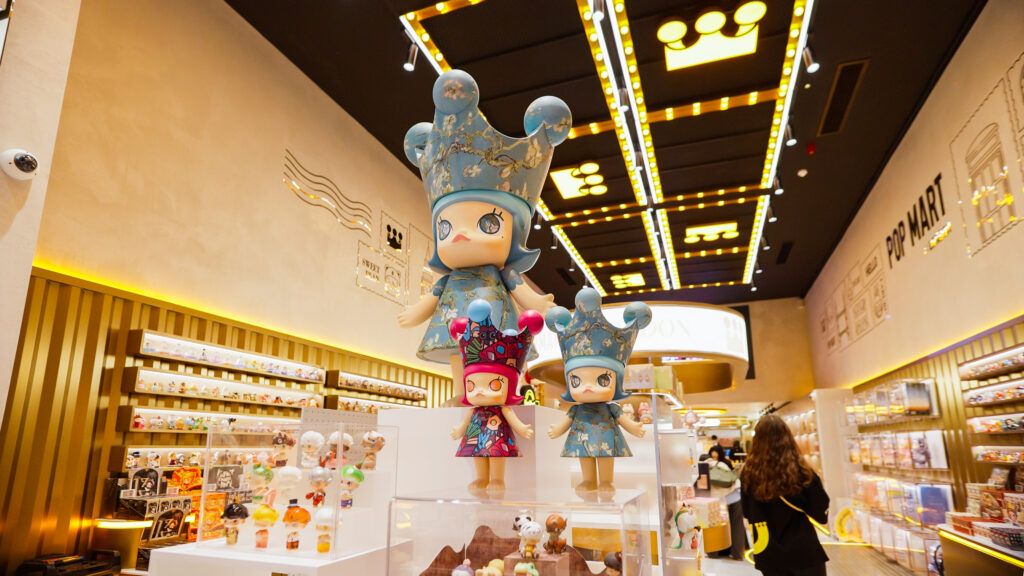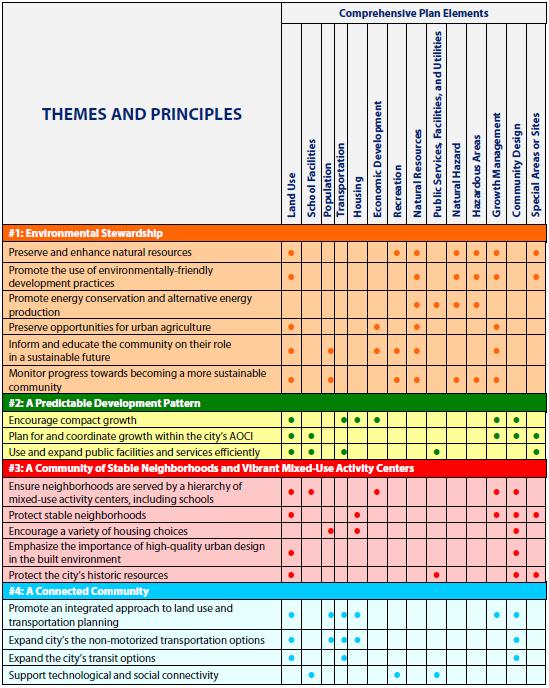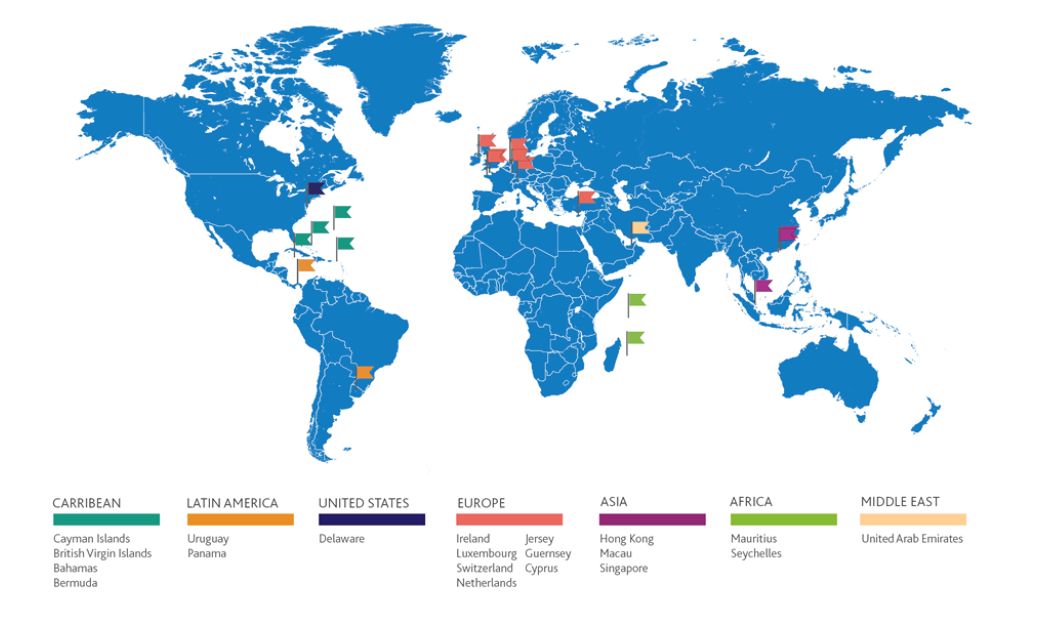Pop Mart's Global Expansion Strategy
Transforming a Chinese Toy Brand into a Worldwide Phenomenon
I've been following Pop Mart's remarkable journey from a local Chinese retailer to a global powerhouse in the designer toy industry. Their strategic international expansion represents one of the most successful East-to-West brand growth stories in recent years, with overseas markets now accounting for nearly 40% of their total revenue.
The Evolution of Pop Mart
I've watched Pop Mart transform from a modest retail concept in China to a global phenomenon that's reshaping the designer toy industry worldwide. The company's journey is a masterclass in strategic growth and brand building.

Pop Mart began as a retail concept in China focused on designer toys and collectibles. What distinguished them from competitors was their innovative "blind box" concept – small packages containing collectible figurines with designs kept secret until unboxing. This element of surprise and collectibility created a powerful emotional connection with consumers that would later prove transferable across cultural boundaries.
By establishing strong partnerships with artists and developing proprietary intellectual property (IP), Pop Mart built a foundation of unique characters that resonated deeply with their audience. Characters like Molly, Dimoo, and SKULLPANDA became cultural phenomena in China before achieving international recognition.
The company's domestic success led to its 2020 IPO, providing capital for what executives call their "dual-wheel strategy" – focusing simultaneously on "globalization" and "groupification." This approach has yielded impressive results, with overseas markets including Hong Kong, Macau, and Taiwan now contributing a remarkable 38.9% of total revenue, reaching 5.07 billion RMB – a staggering 375.2% increase from previous periods.
Pop Mart's Dual-Wheel Strategy
The company's growth is powered by two complementary strategic focuses:
flowchart TD
A["Pop Mart's Dual-Wheel Strategy"] --> B["Globalization"]
A --> C["Groupification"]
B --> D["Southeast Asia\n(47.4% of overseas revenue)"]
B --> E["North America"]
B --> F["Europe"]
B --> G["Other Markets"]
C --> H["IP Development"]
C --> I["Retail Innovation"]
C --> J["Product Categories"]
C --> K["Artist Collaborations"]
style A fill:#FF8000,stroke:#333,stroke-width:2px,color:white
style B fill:#FF9933,stroke:#333,stroke-width:1px
style C fill:#FF9933,stroke:#333,stroke-width:1px
As someone deeply interested in multi-segment marketing strategy, I find Pop Mart's approach particularly fascinating. They've managed to maintain their core brand identity while adapting to diverse international markets – no small feat for a company with distinctly Chinese origins.
Strategic Regional Approach to Global Markets
One of the most impressive aspects of Pop Mart's international expansion is their carefully segmented regional approach. Rather than treating global markets as a monolith, the company has strategically divided its overseas operations into four distinct regions, each with tailored strategies.
Pop Mart's Overseas Revenue Distribution
Revenue breakdown across Pop Mart's international market segments:
Southeast Asia: The Growth Engine
Southeast Asia has emerged as Pop Mart's international stronghold, contributing 47.4% of overseas revenue. The company's strategic entry began with Singapore in January 2021, establishing their first overseas store at Funan Mall. This carefully chosen location served as a beachhead for broader regional expansion.
The results have been nothing short of remarkable – revenue from Southeast Asian markets grew by an astonishing 619.1%, reaching 2.4 billion RMB. Countries like Vietnam, Indonesia, and the Philippines have proven particularly receptive to Pop Mart's unique retail concept and collectible figurines.
I believe several factors contribute to this regional success:
- Cultural proximity to the Chinese market, making character designs and collecting concepts more immediately resonant
- Rising disposable income among young urban professionals in Southeast Asian economies
- Strong existing collector communities that embraced Pop Mart's offerings
- Strategic retail partnerships with established shopping destinations

North American Expansion
Pop Mart's North American strategy represents a more challenging frontier, requiring adaptation to Western consumer preferences and retail environments. Nevertheless, the region has generated approximately 720 million RMB in revenue, accounting for 14.2% of overseas business.
The company has taken a measured approach to this market, focusing on major metropolitan areas with strong designer toy and collectible communities. Their America's economic journey has influenced their strategic placement of flagship stores and roboshops in high-traffic retail destinations.
European Focus for 2025
Looking ahead, management has identified Europe as a key focus area for 2025. Their strategy centers on elevating Pop Mart's positioning through high-end artistic collaborations that resonate with European sensibilities. This approach acknowledges the different consumer expectations and competitive landscape in European markets compared to Asia.
By developing a strategic sales plan tailored to each regional market, Pop Mart has avoided the common pitfall of treating international expansion as a one-size-fits-all proposition.
The Multi-Channel Distribution Framework
In my analysis of Pop Mart's global expansion, I've found their multi-channel distribution framework to be particularly innovative. Unlike many digital-first brands, Pop Mart has maintained a strong emphasis on physical retail experiences, with approximately 60% of revenue generated through offline channels.
Pop Mart's Revenue Channel Mix
Distribution of sales across different retail channels:
This distribution strategy comprises several distinct retail formats, each serving a specific purpose in Pop Mart's global expansion:
Pop Mart's Retail Format Ecosystem
The complementary store formats supporting global expansion:
flowchart TD
A["Pop Mart Global Retail Ecosystem"] --> B["Flagship Concept Stores"]
A --> C["Roboshops"]
A --> D["Pop-up Locations"]
A --> E["Online Platforms"]
B --> B1["Brand Experience Centers"]
B --> B2["Complete Product Range"]
B --> B3["Community Building"]
C --> C1["Automated Retail Units"]
C --> C2["High-Traffic Locations"]
C --> C3["24/7 Availability"]
D --> D1["Market Testing"]
D --> D2["Limited-Time Promotions"]
D --> D3["Special Releases"]
E --> E1["Regional E-commerce"]
E --> E2["Social Media Integration"]
E --> E3["Mobile App Experience"]
style A fill:#FF8000,stroke:#333,stroke-width:2px,color:white
Flagship Concept Stores
Flagship stores serve as immersive brand experience centers, showcasing Pop Mart's full product range and creating spaces for community building among collectors. These locations are strategically positioned in premium retail districts and shopping centers in major international cities.

Roboshops and Automated Retail
One of Pop Mart's most innovative distribution channels is their network of roboshops – automated vending machines that dispense blind boxes. These compact retail units allow the company to establish presence in high-traffic locations like malls, airports, and entertainment venues without the overhead of a full store.
The roboshop concept has proven particularly effective for rapid market penetration in new regions, allowing Pop Mart to test consumer response before committing to larger retail investments.
Pop-up Locations
Temporary pop-up stores provide flexibility to test new markets, promote special releases, or capitalize on seasonal shopping periods. These installations create buzz and urgency while gathering valuable data on consumer preferences in emerging markets.
Online Platform Integration
While physical retail dominates Pop Mart's distribution strategy, their online presence is carefully tailored to each regional market. In Southeast Asia, partnerships with established e-commerce platforms complement their own direct channels, while Western markets see greater emphasis on social media integration and community building through collector forums.
The company's application of the 4 Ps of marketing is particularly evident in how they've adapted their place (distribution) strategy to suit different market conditions while maintaining consistent product, pricing, and promotion approaches.
Cultural Adaptation and Localization Strategies
In my experience analyzing global brands, I've found that cultural adaptation often determines success in new markets. Pop Mart has demonstrated remarkable skill in balancing global brand consistency with local market preferences – a delicate equilibrium that many companies struggle to achieve.

The Emotional Consumption Model
At the heart of Pop Mart's cross-cultural appeal is what analysts have termed their "emotional consumption model." This approach focuses on creating products that evoke universal emotional responses – joy, nostalgia, surprise, and the satisfaction of collecting – that transcend cultural boundaries.
The blind box concept itself taps into psychological triggers that seem to work across diverse markets: the excitement of surprise, the completionist desire to collect full sets, and the social currency of rare finds. These emotional drivers have proven remarkably consistent across Asian, North American, and European consumers despite their cultural differences.
IP Collaboration Strategies
Pop Mart has strategically diversified its IP portfolio through collaborations with:
- Local artists in target markets who understand regional aesthetic preferences
- Global entertainment properties with established fan bases in specific regions
- Cultural institutions that add prestige and local relevance
- Fashion and lifestyle brands that elevate Pop Mart's positioning in premium markets
Pop Mart's Cultural Adaptation Framework
Regional approach to balancing global brand with local preferences:
flowchart TD
A["Global Brand Identity"] --> B["Regional Adaptation"]
B --> C["Southeast Asia"]
B --> D["North America"]
B --> E["Europe"]
C --> C1["Local Artist Collaborations"]
C --> C2["Cultural Festival Themes"]
C --> C3["Regional IP Partnerships"]
D --> D1["Pop Culture References"]
D --> D2["Entertainment Franchises"]
D --> D3["Collector Community Focus"]
E --> E1["Art-Forward Designs"]
E --> E2["Premium Positioning"]
E --> E3["Fashion Collaborations"]
style A fill:#FF8000,stroke:#333,stroke-width:2px,color:white
style B fill:#FF9933,stroke:#333,stroke-width:1px
Regional Product Customization
I've observed how Pop Mart carefully customizes product offerings by region while maintaining their core design aesthetic. In Southeast Asia, collections often incorporate local cultural elements and celebrations. North American releases tend to emphasize pop culture connections and collectibility, while European offerings focus more on artistic merit and premium materials.
This strategic approach to American manufacturing and global product adaptation demonstrates Pop Mart's sophisticated understanding of how consumer preferences vary across markets.
Challenges and Strategic Solutions in Global Expansion
Despite Pop Mart's impressive international growth, their expansion hasn't been without obstacles. I've identified several key challenges they've faced and the strategic solutions they've implemented to address them.
| Challenge | Strategic Solution | Market Impact |
|---|---|---|
| Supply Chain Complexity | Regional distribution centers and local manufacturing partnerships | Reduced shipping times and costs; better inventory management |
| Regulatory Compliance | Market-specific product testing and certification processes | Avoided costly recalls and legal issues in international markets |
| Brand Perception Differences | Tailored marketing strategies emphasizing different brand attributes | Successfully positioned as premium collectibles in Western markets |
| Local Competition | Acquisition of regional toy designers and exclusive IP rights | Differentiated product offerings with unique appeal in each market |
Supply Chain Complexities
Managing a global supply chain across multiple continents presents significant logistical challenges. Pop Mart has addressed these by establishing regional distribution centers and forming strategic manufacturing partnerships in key markets. This approach has reduced shipping times, lowered costs, and improved inventory management across their expanding network of stores.
Regulatory Hurdles
Each new market brings its own regulatory requirements for toy safety, packaging, and labeling. Pop Mart has developed comprehensive compliance protocols for each region, including market-specific product testing and certification processes. This proactive approach has helped them avoid costly recalls and legal complications.

Brand Perception Differences
Consumer perceptions of collectible toys and blind box concepts vary significantly between Asian and Western markets. In Asia, Pop Mart's products are mainstream consumer items, while Western markets initially viewed them as niche collectibles. The company has successfully navigated this through tailored marketing strategies that emphasize different brand attributes depending on the region.
Competition Analysis
Each international market presents unique competitive landscapes. In Southeast Asia, Pop Mart faces regional toy designers with established local followings. North American expansion puts them in competition with entrenched collectible brands and retail giants. European markets present competition from high-end designer toy makers with artistic credentials.
To address these competitive challenges, Pop Mart has strategically acquired regional toy designers and secured exclusive IP rights to differentiate their offerings in each market.
Future Expansion Trajectory and Growth Opportunities
Looking ahead, I see Pop Mart's global expansion continuing along several strategic vectors, with ambitious plans for store openings and market development through 2025-2026.
Projected Store Expansion 2025-2026
Forecast of new Pop Mart locations by region:
Untapped Markets
While Southeast Asia, North America, and Europe remain primary focus areas, Pop Mart has identified several promising untapped markets for future expansion:
- Middle East: Starting with flagship stores in Dubai and Abu Dhabi, targeting the region's luxury retail sector and younger demographics with high disposable income
- Latin America: Initial market testing in Mexico and Brazil through pop-up locations and e-commerce partnerships
- Oceania: Building on early success in Australia with expanded presence in major cities and potential entry into New Zealand
Digital Transformation Initiatives
Pop Mart's future growth will be supported by several digital initiatives designed to enhance the collecting experience and build stronger global communities:
Pop Mart's Digital Transformation Roadmap
Key digital initiatives supporting global expansion:
flowchart TD
A["Digital Transformation Initiatives"] --> B["Enhanced Mobile App"]
A --> C["AR Collection Experiences"]
A --> D["Global Collector Community Platform"]
A --> E["NFT Integration"]
B --> B1["Personalized Recommendations"]
B --> B2["Collection Management"]
B --> B3["Store Locator & Inventory"]
C --> C1["Virtual Unboxing"]
C --> C2["Collection Display"]
C --> C3["Interactive Features"]
D --> D1["Trading Platform"]
D --> D2["Community Events"]
D --> D3["Regional Forums"]
E --> E1["Digital Collectibles"]
E --> E2["Physical-Digital Pairing"]
E --> E3["Limited Edition Releases"]
style A fill:#FF8000,stroke:#333,stroke-width:2px,color:white
IP Development Roadmap
Central to Pop Mart's continued global success is their strategic approach to IP development for international audiences. Future plans include:
- Developing new character lines specifically designed for Western markets
- Expanding existing popular IPs with region-specific storylines and merchandise
- Acquiring established character rights in target markets
- Collaborations with global entertainment properties to create crossover collections

Lessons for Global Brand Expansion from Pop Mart's Journey
As I've analyzed Pop Mart's remarkable international growth story, I've identified several transferable strategies that other retail brands can apply to their own global expansion efforts.
Phased Regional Approach
One of the most valuable lessons from Pop Mart's playbook is their commitment to phased regional expansion rather than attempting simultaneous global launches. By establishing a strong foothold in Singapore before expanding to other Southeast Asian markets, they were able to:
- Test and refine their international operations in a controlled environment
- Build regional brand awareness through concentrated marketing efforts
- Develop local partnerships that facilitated smoother expansion to neighboring countries
- Gain invaluable consumer insights before committing significant resources to wider rollouts
This methodical approach stands in stark contrast to brands that attempt to enter multiple diverse markets simultaneously, often resulting in diluted impact and operational inefficiencies.
Challenging Convention: East to West Expansion
Pop Mart's success challenges the conventional wisdom that global retail expansion must follow a Western-to-Eastern trajectory. Their East-to-West expansion model demonstrates that:
- Chinese brands can successfully internationalize while maintaining their core identity
- Cultural products can transcend their origins when they tap into universal emotional experiences
- Traditional retail concepts can thrive even in an increasingly digital marketplace
- Innovative distribution models can overcome market entry barriers
Key Performance Indicators for International Expansion
Critical metrics for measuring global growth success:
Key Performance Indicators
Pop Mart's approach to measuring international expansion success offers valuable insights for other brands. Rather than focusing solely on traditional metrics like sales and store count, they monitor a holistic set of indicators including:
- Collector community growth and engagement levels
- Social media sentiment analysis by region
- IP popularity rankings across different markets
- Store traffic patterns and conversion rates
- Secondary market valuations of limited releases
This comprehensive approach to performance measurement allows for more nuanced strategic adjustments and better resource allocation across their expanding global footprint.

Transform Your Market Expansion Strategy with Visual Clarity
Ready to visualize your brand's global growth journey like Pop Mart? PageOn.ai helps you create compelling visual narratives that communicate complex market expansion strategies with clarity and impact. From regional performance comparisons to distribution network mapping, our platform makes complex data instantly understandable.
Final Thoughts
As I've explored throughout this analysis, Pop Mart's strategic expansion beyond China's borders represents a masterclass in thoughtful global growth. Their phased regional approach, multi-channel distribution framework, and cultural adaptation strategies offer valuable lessons for any brand with international ambitions.
What makes their journey particularly remarkable is how they've maintained their core brand identity while successfully adapting to diverse international markets. By focusing on universal emotional connections through their products while tailoring distribution and marketing approaches to regional preferences, Pop Mart has created a blueprint for East-to-West expansion that challenges conventional wisdom.
As the company continues its global growth trajectory, their strategic focus on Europe in 2025 and exploration of untapped markets like the Middle East and Latin America will provide further insights into the evolving nature of international retail expansion in the post-pandemic era.
For brands looking to follow in Pop Mart's footsteps, the key takeaway is clear: successful global expansion requires a carefully orchestrated balance of standardization and adaptation, physical and digital presence, and patience to build authentic connections in each new market.
You Might Also Like
Visualizing Electronics Fundamentals: ROHM's Component Guide for Beginners to Experts
Explore ROHM's electronics basics through visual guides covering essential components, power semiconductors, sensors, automotive applications, and design resources for all skill levels.
How AI Saves Marketing Teams 5+ Hours Weekly While Boosting Productivity 83% | Visual Content Revolution
Discover how AI transforms marketing workflows, saving 5+ hours weekly and boosting productivity by 83%. Learn visual content strategies that eliminate manual tasks and accelerate campaigns.
How AI Amplifies Marketing Team Capabilities While Preserving Human Jobs | Strategic Marketing Enhancement
Discover how AI transforms marketing teams into powerhouses without reducing workforce size. Learn proven strategies for capability multiplication and strategic enhancement.
Bridging Worlds: How Diffusion Models Are Reshaping Language Generation | PageOn.ai
Explore the revolutionary convergence of diffusion models and language generation. Discover how diffusion techniques are creating new paradigms for NLP, bridging visual and linguistic domains.
